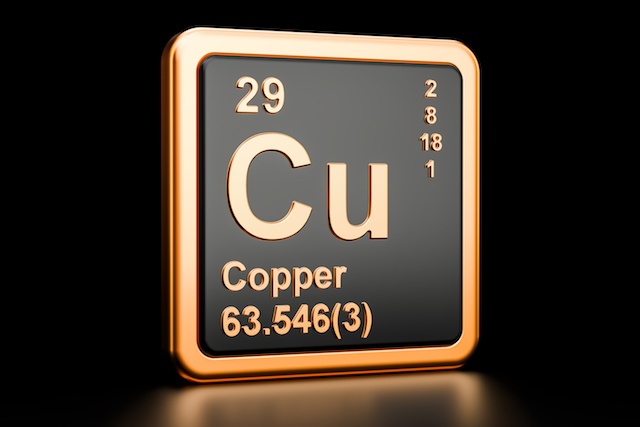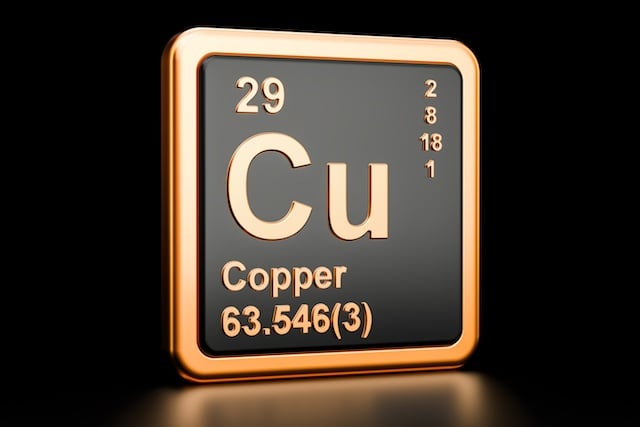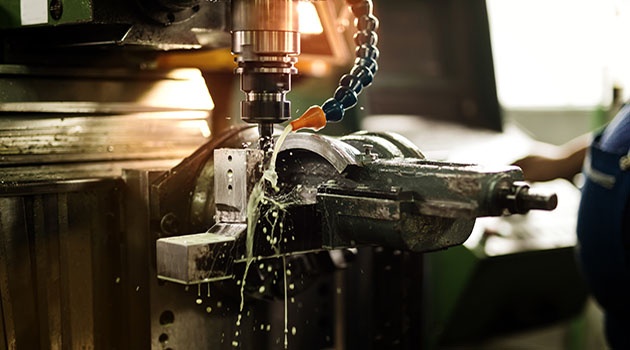
Copper is a material with a long history; we’ve used it for thousands of years. In the past, it was one of the very few metals to occur naturally in a directly usable form. However, in modern times, it is obtained from a mineral ore. The largest producers of copper today are Chile and the USA.
Its use runs throughout human history, with applications including buildings, jewellery, tools, crockery and much more. The discovery and use of copper is such an important step in human development that there is a brief Copper Age (the Chalcolithic period), which comes shortly before the more-established Bronze Age. At this time, copper was alloyed with tin to make bronze, the first metal alloy.
Copper has since been used in many alloys and still plays a part in today’s far more technical and high-performance superalloys. It has desirable properties that make it useful. It is a soft and ductile metal that offers very high thermal and electrical conductivity. This is why it’s often used in electronics and for wiring. It is also naturally corrosion resistant, easily worked and non-magnetic.
Many of the nickel alloys that Corrotherm stocks have varying amounts of copper in their composition.
Copper in the INCONEL and INCOLOY ranges
Within the INCONEL range, copper is strictly limited. Copper occurs naturally with some other metals and can unintentionally contaminate the carefully balanced composition. During production of INCONEL alloys, it’s important to keep an eye on copper levels to ensure they don’t exceed the maximum limit, which varies depending on the Grade. For most of the INCONEL superalloys, copper is limited to less than 1%, if at all.
INCOLOY alloys, which are leaner-nickel versions of the INCONEL range, have higher thresholds for copper, and it is deliberately added to the composition of some Grades. For example, both INCOLOY alloy 825 and INCOLOY alloy 925 have 1.5-3% copper. The copper is added to work with the nickel and molybdenum to give outstanding resistance to reducing chemicals, including sulfuric and phosphoric acids.
How copper in used in MONEL alloys
The MONEL range of alloys is far more reliant on copper. The alloys are formed on a base of nickel and copper, along with other significant additions.
MONEL alloy 400 has similar properties to commercially pure nickel, but is a lower-cost alternative due to its high copper content. It has approximately 30% copper and is a versatile, ductile material with a myriad of uses. It is popular for petroleum distillation tower components and valve internals, as well as applications within the marine sector. It’s also spark-free, meaning it can be employed in explosives and rocketry. The blend of nickel and copper gives the alloy good corrosion resistance, which is achieved by ensuring the copper level is controlled. Higher-copper alloys can be less resistant to attack by oxidising media.
In environments where a stronger material is required, MONEL alloy K-500 is a precipitation-strengthened version of MONEL alloy 400. It still has the same corrosion resistance properties, but is a tougher alloy. This is achieved by adding aluminium and titanium to the nickel-copper base. It’s often used in oil extraction, marine and chemical processing.
To find out more about our range of superalloys, please visit our Grades page or get in touch with a member of our team to discuss your next project.
 Copper – specification, properties and uses
Copper – specification, properties and uses

